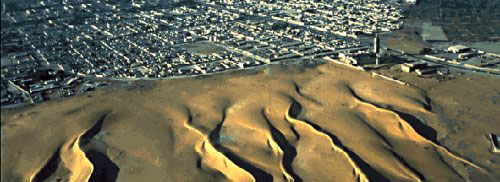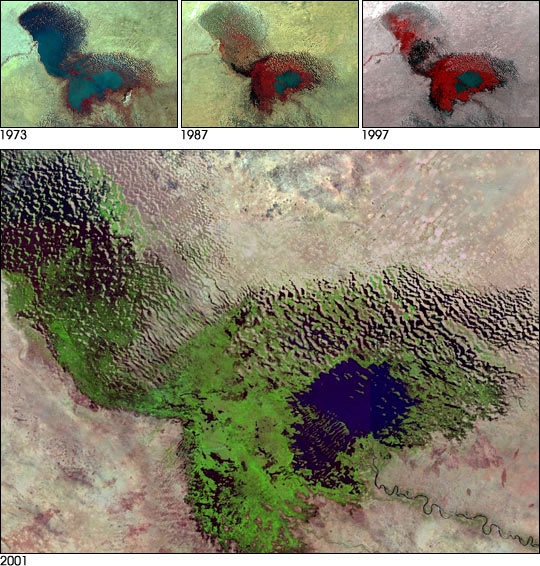Desertification

Dunes encroach on a village in the west African nation of Mauritania. |
As you have read, sand dunes migrate on their downwind side. They can swallow up anything in their path as they do. This movement of sand dunes is natural and takes place on the immediate edges of existing deserts. Changes in climate, such as differences in the distribution of rain, can make a desert shrink or grow larger, depending on how those changes affect sand dune migration. Desertification is the process where deserts expand their borders as a result of dune migration.
You may recall, from the Weathering and Soils Unit of this course, that deserts can also grow larger due to human-made causes. If human activity degrades the soil in areas adjacent to deserts, then the land erodes more easily, which increases deflation and abrasion and encourages the desert to expand. Once non-desert areas become barren, dry lands. Practices that lead to desertification include:
- poor cultivation practices
- overgrazing of livestock
- deforestation
- compaction of soil
The Sahel, a semi-arid region south of the Sahara Desert, is an area where desertification is widespread. The Sahel extends across the entire continent of Africa. Livestock overgrazing and the tree removal for firewood have stressed the local soil there, making it easily blown away by wind erosion. This satellite image of Lake Chad in the Sahel region shows how it has shrunk nearly 97 percent in the last few decades as the desert has grown around it.
